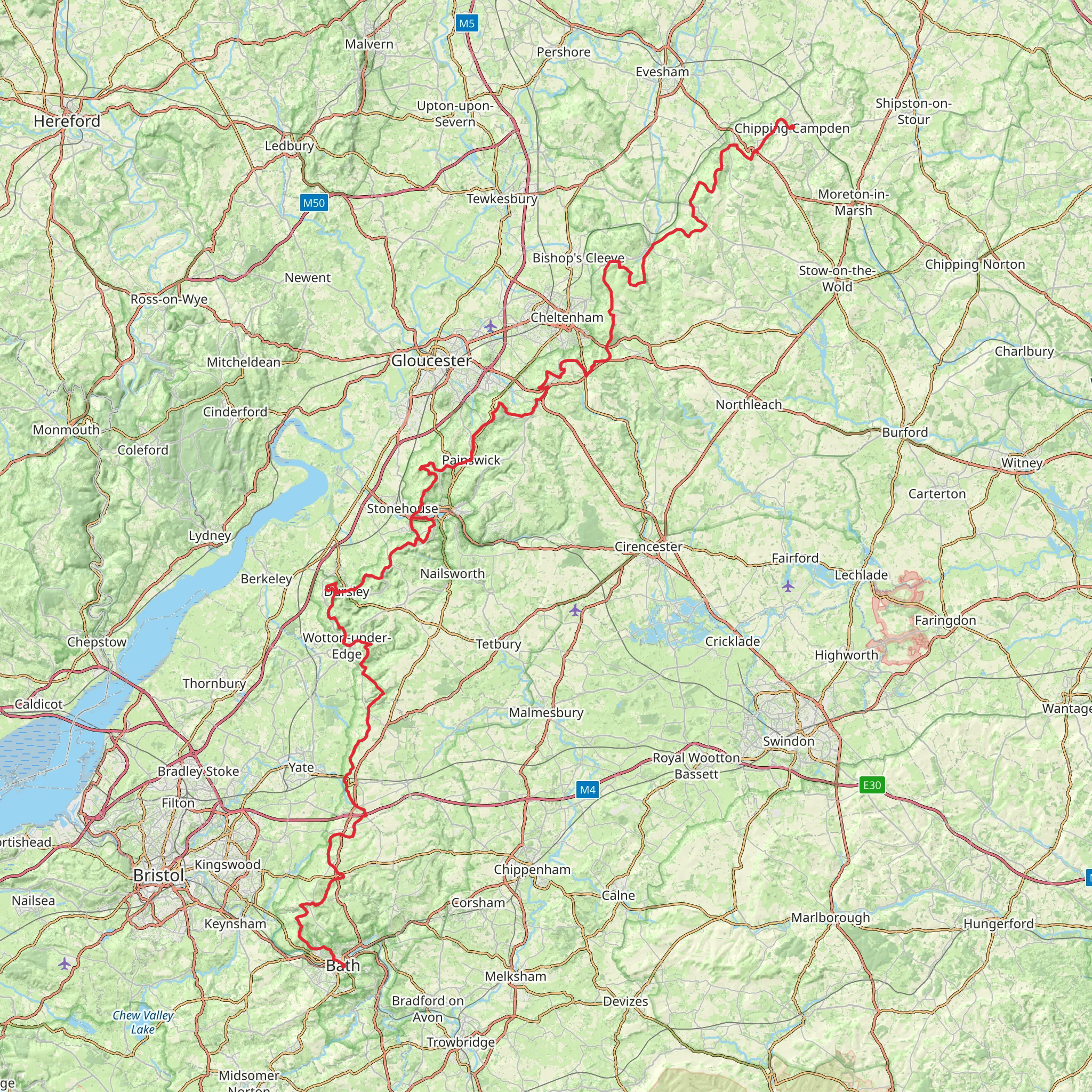Download
Preview
Add to list
More
161.1 km
~10 days
4657 m
Multi-Day
“Embark on the Cotswold Way for historical discovery and natural splendor across England's rolling hills.”
The Cotswold Way offers an immersive journey through the quintessentially English countryside, spanning approximately 161 kilometers (100 miles) with an elevation gain of around 3200 meters (10,500 feet). This point-to-point trail begins near the market town of Chipping Campden in Gloucestershire and winds its way south to the historic city of Bath. Getting to the Trailhead To reach the northern trailhead in Chipping Campden, hikers can use public transport by catching a train to Moreton-in-Marsh station, followed by a short bus ride to Chipping Campden. If driving, the start of the trail is accessible via the B4035, with parking available in the town. Navigating the Trail The Cotswold Way is well-marked with the National Trail acorn symbols, making navigation straightforward. For additional support, hikers can use the HiiKER app to access detailed maps and GPS tracking to ensure they stay on the right path. Historical Significance and Landmarks As you traverse the Cotswold Way, you'll be walking through history. The trail passes numerous historical sites, including the ancient Neolithic burial chamber at Belas Knap, Sudeley Castle near Winchcombe, and the Roman heritage in Bath. The Cotswolds region itself is famed for its centuries-old limestone villages and rolling hills, which have been designated as an Area of Outstanding Natural Beauty. Natural Beauty and Wildlife The trail offers a diverse range of landscapes, from open grassland to beech woodlands and wildflower meadows. Wildlife enthusiasts may spot a variety of birds, such as skylarks and buzzards, as well as deer and badgers. The spring and summer months are particularly vibrant with wildflowers, including the rare pasqueflower near Haresfield Beacon. Challenges and Terrain The Cotswold Way is considered to have a medium difficulty rating. Hikers should be prepared for a mix of terrains, including steep inclines, woodland paths, and stony tracks. The highest point is Cleeve Hill, near Cheltenham, which stands at 330 meters (1,083 feet) and offers panoramic views of the surrounding countryside. Accommodation and Resupply Points There are plenty of options for accommodation along the route, ranging from camping sites to bed and breakfasts. Resupply points are available in the towns and villages along the way, such as Broadway, Winchcombe, and Wotton-under-Edge, where hikers can stock up on provisions and enjoy local hospitality. Weather and Preparation The English weather can be unpredictable, so it's essential to be prepared for all conditions. Waterproof gear and layers are recommended, as well as sturdy hiking boots. The trail can be hiked year-round, but the most popular times are from spring to autumn when the weather is milder. Conclusion The Cotswold Way is a trail that offers not just a physical challenge but also a rich tapestry of English heritage, stunning landscapes, and diverse wildlife. With proper preparation and an appreciation for the natural and historical significance of the region, hikers will find this trail to be a rewarding experience.
What to expect?
Activity types
Comments and Reviews
User comments, reviews and discussions about the Cotswold Way, England.
4.82
average rating out of 5
77 rating(s)

